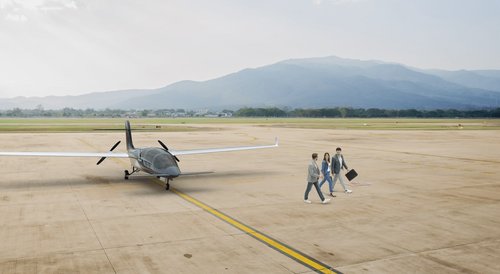Revolution.Aero Uplift: E-round the world in battery planes

On September 28, 1924 eight US army pilots and mechanics in four Douglas World Cruisers completed the first circumnavigation of the globe by air. It took them 175 days, 74 stops and about 27,550miles.
A century later, Netherlands-based start up, ELECTRON aerospace is aiming to mark a new era of aviation, a battery-electric one, by building the first commercially viable electric aircraft to fly around the world. Scheduled for 2024, Travis Ludlow, the youngest pilot to fly solo around the world, will be making the flight in ELECTRON’s five-seat prototype, the Electron 5 (pictured below).
Josef Mouris, co-founder and CEO of both ELECTRON aerospace and ELECTRON aviation tells Revolution.Aero: “If you want to accelerate widespread battery-electric flying you realise that smaller aircraft are actually much more practical. It is a whole new market segment that hasn’t previously existed because it has not been economically viable to operate an aircraft with just a few people onboard, especially on the maintenance side of things.”
That is what battery-electric flight changes, the costs of the maintenance on the drive system are almost wiped out.
Mouris says on a similar sized aircraft to the Electron 5 both engines have to be overhauled or replaced every 1,800hrs at a cost of about €70,000. “If you had a taxi firm and you had to get a new car every 1,800hrs I don’t think you’d have a business,” he says. “The maintenance of the drive system is going to be nonexistent in comparison. More than two orders of magnitude lower on the cost.” Which means utilisation can be driven up.
Public acceptance is key to it all. Most people are used to flying on big aircraft with over 100 passengers onboard, says Mouris. “So if we can fly this aircraft around the world there’s two things we can achieve. One is to prove that battery-electric aircraft are here and you can get anywhere in the world with them,” he explains. “The second thing is, it is safe. If you can fly around the world you can probably fly from London to Leeds in it.”
Mouris, a former commercial airline pilot, launched the company during the first Covid-19 lockdown. With a family to support he had to calculate how long he could run with the idea before it either took off or not. Two years later, ELECTRON has a two-seater proof of concept that has flown over 250 hours and completed more than 1,000 take-off and landings.
Revolution.Aero can also reveal that ELECTRON has its first “relatively big” investment landing in the bank account imminently. The company is also in talks with various potential suppliers on the battery and drive systems side. “We are really focused on being the aircraft manufacturer and then we integrate all the systems that we buy in from other companies into the aircraft. Really the opposite to Tesla in the sense that we’re not trying to be vertically integrated, more horizontally integrated,” says Mouris.
Where does the startup fit in the landscape of electric aerospace? Mouris says he was actually surprised by how few were targeting the pure battery-electric fixed wing market – that is in part why he set up shop. Mouris is targeting training before moving towards the upper end of the market – call it electric regional business travel.
“We are the only company right now that’s actually building a twin engine battery-electric aircraft that is suitable for pilot training. So that is our niche and later with ELECTRON aviation we will move to the eRAM side of things,” explains Mouris.
Despite its tender age the firm has aviation pedigree, its flying two-seater prototype has been in development for nearly a decade. Also, now that certification standards have been set thanks to Pipistrel, a precedent has been created with EASA. This should help ease the coming process, says Mouris.
If all goes well ELECTRON aerospace will be producing 140 aircraft per year by the end of 2027. “We will see how and when we expand. Most startups have been flogging this number of 1,000 aircraft per year. Which is understandable because the most produced aircraft ever is the Cessna 172 and there are on average just under 1,000 of those produced per year,” says Mouris.
When you compare that to the automotive industry, the 50,000 or so 172s ever made does not compare to the 79.1m motor vehicles made in 2021 alone. Not even in the same airspace. But Mouris thinks electrification can begin to close the gap.
“Again it comes back to the cost of the drive system. Obviously you have other costs like crew, landing charges, all of that, but in conventional aircraft it is the drive system which is really expensive.” If you can minimise maintenance costs you can you maximise usage, scale and affordability.






